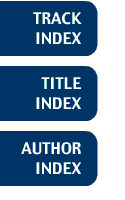
Track: Ecology, Conservation, and Archaeology
Subsurface Soil Moisture Detection with Airborne Passive Microwave Radiometry

Stephen DeLoachSteve Ellis
Microwave radiometry, or passive microwave remote sensing, is one of the methods used for remote observations of the environment. It is based on the measurement of the natural electromagnetic radiation of objects in the microwave range of wavelengths. Between the wavelengths of 2 to 30 cm, the earth's radiation is primarily a function of the free water content in soil. EarthData Technologies, working with personnel from the Russian Academy of Science, has developed the ability to collect georeferenced airborne microwave data with a relatively small ground sample distance. In November 1997, the U.S. Army Corps of Engineers conducted a flight along the Mississippi River near Cairo, Illinois, to assess the feasibility of using this technique to map the spatial variation of subsurface soil moisture across the river basin and in particular along the federal levee system. The data were merged with the Corps' River Engineering, Environmental, and GIS database layers containing the streets, highways, and federal levee system. The resulting data successfully presented areas of subsurface moisture that are known to correspond to water intrusion under the levee during flood events.
Stephen DeLoach
EarthData Technologies
18227 Airpark Drive
Hagerstown, MD 21742
USA
Telephone: 310-733-1176
Fax: 310-733-4906
E-mail: sdeloach@earthdata.com